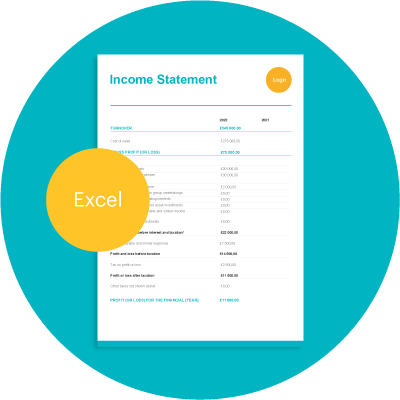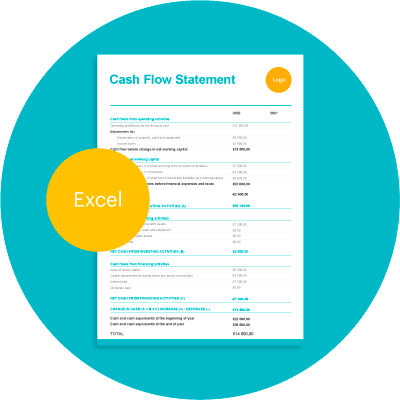Balance Sheet Template
‘Balance sheet’ is one of those terms that can fill an entrepreneur with dread. Sorting out finances takes away from trying to build your business and, because it can sometime be hard wrapping our heads around the numbers, many small business owners decide to outsource all of this work to accountants.
However, it doesn’t have to be that way. At Zervant, free invoicing software is only the start as we continue to provide the tools necessary for small businesses to take care of their own finances. Here, we’ve put together a free balance sheet template and a short guide on how to fill it out for yourself. No more costly accountant bills!
Table of Contents
What is a balance sheet?
A balance sheet is one of the three core financial statements – the others being a cash flow statement and an income statement, both of which can also be found on the Zervant blog and make up part of our accounting paperwork template pack.
The purpose of a balance sheet is to provide a snapshot of a business’s assets, liabilities and equity at a given point in time. A balance sheet is a numerical, accurate representation of a core principle of accounting which states:
“The stuff that a business owns is equal to the stuff that a business owes”.
In other words, it’s a summary of the constituent parts which make up the accounting equation. A snapshot of the accounting equation in actual figures, so to speak. What is the accounting equation you ask?
Assets = liabilities + equity
We explain these terms under “filling out a balance sheet”.
Do I need a balance sheet?
If your business is registered at Companies House, then you must fill out a balance sheet by law. It needs to be submitted to HMRC each year, but remember to keep a copy of it for your own files.
Those who are self-employed do not have to submit a balance sheet to the authorities, although it is recommended that you do so. It gives you a picture of how everything is progressing and also what could be going wrong with your business financially. By fixing it in advance, you will save time and money further down the line.
“It allows you to see a snapshot of your business on a given date, normally month or year-end. It is also a useful tool for management to see the value of assets a business owns, including equipment, bank balance and what it owes at any given time.”
From Business Balancing Basics, a website dedicated to helping people navigate the world of accounting.
Free balance sheet template
We know that filling in forms and submitting accounts can be time-consuming and tricky, so we wanted to help. We have created a free balance sheet template to take away the stress of accounting. Simply gather your numbers and download our template in Excel and get going.
Balance Sheet Template
Manage your business finances with Zervant Create Free Account
Download: Excel
Manage your business finances with Zervant
Download: Excel
Balance sheet breakdown
Below is a breakdown of each section of the balance sheet with a brief explanation of why each section is separated as it is. If you are adding an item to your balance sheet and don’t know where to account for it, chances are you can look at the list below and work out where the item goes on your balance sheet.
Let’s look at the accounting equation again and go through each item in detail. Assets = liabilities + equity.
Assets
Assets are divided into two types based on how ‘liquid’ they are (how quickly they can be turned into usable cash for the business).
Current assets (or short-term assets) usually last for under a year and can be very easily liquidated for the business needs. These include cash, receivables (how much you are owed by third parties), prepaid expenses and prepayments.
Non-current assets (or long-term assets) are those assets which have a useful life longer than a year. These are often broken down further into two groups, tangible assets (tools, equipment, vehicles) and intangible assets (goodwill, patents, trade names etc.).
Liabilities
Much like assets, liabilities are broken down into two main groups.
Current liabilities (or short-term liabilities) are liabilities which are due to be paid in the short-term. These include taxes payable, accounts payable (how much you owe to third parties) and accrued expenses.
Non-current liabilities (or long-term liabilities) are those liabilities which are due to be paid back but over a long time period, usually longer than a year. These often include things like long term loans and deferred tax liabilities.
Equity
Equity is broken into two categories.
Capital contributions (or equity capital) refers to the money invested into the business by the owners in exchange for equity. If the company has shareholders, we might call this “common stock”.
Retained earnings are accumulated profits which are held on to for future use.
Filling out the balance sheet template
The first step is to put your company name at the very top of the balance sheet – make sure to put the full name of your company. Then, write the date which the balance sheet refers to – this is the moment in time which you are providing a ‘snapshot’ of.
Note that you do not have to write a period of time here, e.g. 01.07.2021 – 01.08.2021, as this is a snapshot of your business on a specific date. It’s common, though not necessary, to include a snapshot from the previous year on the balance sheet to make it easy to compare finances, year over year.
Next, start filling out the sheet. In order to do this the proper way, one should first create a trial balance report which shows the closing balances in all general ledger accounts at a point in time.
On this balance sheet, we’ve tried to include general asset and liability categories which fit a variety of businesses, though feel free to change these or add more as suits your business.
The most important thing to remember is to update the formula in the “check” row at the foot of the template. The whole reason for doing a balance sheet is to show that your accounts are in balance. If this check row displays “0” then you know your total assets are equal to your liabilities plus equity, as the formula states.
Please be wary of making any changes to the excel sheet if you do not understand how to use basic excel formulas.
Benefits of a balance sheet
As we have already mentioned, some companies must file a balance sheet by law. However, apart from not breaking the law, there are other benefits:
- Helps to monitor business development
- Track inflow and outflow
- Investors will want to see at least 3 years’ accounts before committing
- Compare profitability
- A place to keep all assets and liabilities together
FORA Financial even goes one step further: “Diligently tracking your company’s finances can help you identify potential issues before they turn into major problems. In fact, 29% of small businesses fail because they run out of cash. This is an issue that may be avoided through proper reporting.”
Where does my balance sheet go?
If you are a limited company or a limited liability partnership, you need to submit a copy of your balance sheet to the following:
- Companies House
- HM Revenue & Customs (HMRC)
- Shareholders
- Plus keep one for your own files!
This is done once per year and the deadlines are very strict. Be prepared to pay a fine if you do not submit your balance sheet on time!
We hope that our free template and guide have helped you. If you have any further questions, please get in touch and we can help you!


